Laird Thermal Systems’ LA5000 Liquid-to-air-based Heat Exchanger System for Cooling X-ray in Industrial Scanners
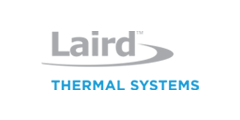
Introduction
Industrial scanning equipment like X-ray machines are used in a wide variety of applications, ranging from non-destructive evaluation looking for manufacturing defects and contaminants to scanning trucks or baggage to ensure safety and security. X-ray inspection can be used for both process and quality control in automated assembly lines. Only a small portion of the energy generated by these systems is emitted as X-rays; the balance is released as heat. Industrial X-ray systems, which can generate several kilowatts of heat during operation, require cooling of the anode to dissipate this heat for optimized performance and a longer operation life. liquid cooling systems provide an excellent cooling mechanism to transfer the heat from the system to the ambient environment. Thermal management systems that feature liquid cooling offer higher efficiencies than air-based heat transfer mechanisms, which translates into higher reliability, reduced field maintenance, greater system uptime and lower total cost of ownership.

X-ray scanning equipment is often used for quality control in food processing plants.
Industrial Applications
Non-destructive evaluation has become vital for manufacturers to increase the efficiency of the testing process both from a time and quality standpoint. The automotive industry uses these scanners to inspect motor blocks and new tires, looking for voids and non-compliant materials in the rubber. Industrial components can be inspected with X-ray scanners to quickly determine material structure and potential defects including cracks, voids and inclusions. The food and beverage industry uses these scanners in the packaging process for quality control by checking the fill level in containers and checking for possible contaminants. Another example in this industry is meat plants that look for bones when processing boneless meat. Continuous process control by X-ray inspection can occur on low or high-volume automated assembly lines, looking at welds and solder joints on printed circuit boards.
Safety and security concerns addressed by the usage of industrial scanners include checked-luggage scanners at airports as well as scanners used at major public events such as the Olympics, where companies might require hundreds of new scanners all at one time. Such scanners are also used to inspect trucks and shipping containers as a non-invasive method to examine their entire cargo.
Inspection stations for pipelines, to look at weld joints on large-diameter pipes, address another safety concern. Such inspections need to be conducted many times, as periodic ongoing inspections, to check replacement joints, and in emergencies when a problem is detected. For these reasons, some industrial scanners and their liquid cooling systems must be portable, in order to reach the inspection site. A potential application for this type of technology is bridge inspection.
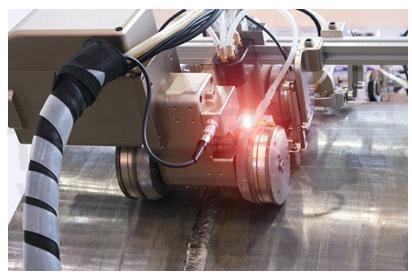
Pipeline inspection stations require a robust liquid cooling system to ensure reliable operation.
Design Objectives
The power level for industrial X-ray systems is between those used in dental applications (where no liquid cooling is required) and medical applications (which often require liquid cooling systems that rotate at high speeds). Industrial scanners are similar to medical imaging X-ray scanners, but typically they require less power, are often stationary and have lower resolution. Industrial X-ray scanners range in size depending on the application. Many scanning systems can use liquid heat exchangers, with their smaller form factor and the cooling capacity of up to 5 kW. The larger systems, such as the truck scanners, require very high power. These scanners may not even use X-rays for the power source, but they may instead use alpha or gamma beams. In such cases, the higher heat load may require 15kW recirculating chillers for the liquid cooling system.
Cooling systems for industrial X-ray scanners do not typically have a size constraint, as they are usually stand-alone units that need only be located near the scanners. However, the more compact the liquid cooling system can be, the better, making them easier to manage and maintain.
Given their size, the liquid cooling systems for industrial X-ray scanners tend to be stationary, while the X-ray system can be either stationary or mounted on a gantry. Stationary systems include checked-luggage scanners, where the bags are placed on a conveyor and moved into the X-ray set-up, while a gantry could be used to move the system over the item to be scanned, such as sections of pipeline. Systems to inspect trucks are constructed so the truck is driven right through the equipment, with the emitter on one side and the detectors on the other side of the vehicle.
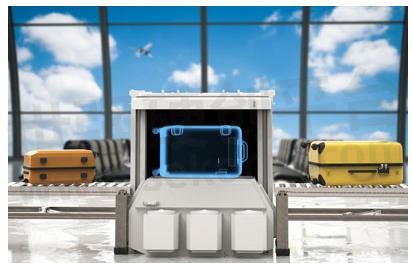
In luggage scanning equipment, bags are placed on a conveyor and pushed into the X-ray set-up.
There are times when liquid cooling systems need to be portable, for example, on-site inspection of pipelines. In these cases, the weight of the liquid cooling system becomes a factor for its mobility. Other important design criteria are simplicity and robustness. The systems are often simple with little instrumentation, as customers are less concerned with temperature control and more so with bulk heat removal. For mobility and ease of maintenance, a more robust system is desired.
Several companies manufacture industrial X-ray scanning equipment, and typically out-source their liquid cooling system needs. They require liquid cooling systems that are reliable and cost-effective. They must offer high performance while being easy to service, minimizing system maintenance and down time for repairs. Although X-ray tubes have a limited life, users expect a liquid cooling system lifespan that equals that of the complete scanner.
Challenges and Opportunities
Many challenges exist in terms of the design, implementation and maintenance of liquid cooling systems for industrial X-ray scanners. However, some of the similarities to medical imaging make the process of developing liquid cooling systems easier, although there are major differences in the operating environment, power requirement and image resolution.
The largest difference between thermal solutions for industrial X-ray scanning and medical imaging is the certification. Because there is no patient involved, there is less consideration given to design margin in the liquid cooling system – but functionality and reliability are still critical. If the X-ray scanner goes down or is damaged due to liquid cooling system failure, then the customer has no working scanner and faces both a potential shutdown and the cost of repairs.
Some companies that already use scanners are making their own modifications to adapt them to industrial applications. For example, it is possible to modify existing medical gantry systems, to make them simpler and more robust. The liquid heat exchangers can also be simpler, while still being robust and reliable.
Demands on the liquid cooling systems for industrial scanners may increase in the future, with up-to-date electronics that provide communication between the liquid cooling system and the scanner, while still offering long-life operation and optimum performance.
Comparing Technologies
Offering the ability to transfer large amounts of heat within confined spaces, liquid cooling systems are self-contained units that recirculate coolant to a predefined set-point temperature. Liquid cooling systems are able to dissipate a large amount of heat generated by high voltage and X-ray generators in an industrial X-ray system. Liquid cooling systems offer many advantages over conventional air-cooled systems. Liquid Cooling Systems provide a higher heat pumping capacity, a better ability to direct the heat away from the source, a more rapid cool down time, and are much quieter. In addition to higher efficiency, liquid cooling systems provide more reliable operation and require less maintenance.
X-ray scanning systems may utilize two different types of X-ray tubes, which impacts the type of coolant used in the liquid cooling system. With bipolar tubes, the cooling fluid around the anode is in contact with the electrical potential, so it must be a liquid that does not conduct electricity, such as oil. For a monopole tube, the anode side is grounded and there is no electrical potential, so a water-based coolant, typically a mixture of water and glycol, can be used.
Depending on the industrial scanner’s application, three different types of liquid cooling systems can be utilized:
The first is a liquid-to-air heat transfer configuration, where a high-pressure pump recirculates the liquid coolant and an air heat exchanger removes the heat from the liquid circuit, dissipating it to the ambient environment by means of a fan. The coolant can be water, a water-glycol mixture, or transformer oil, depending on the type of X-ray tube.
A second type of liquid cooling system uses a liquid heat exchanger configuration, where the pump recirculates the coolant (secondary loop) where heat is dissipated through a liquid-to-liquid heat exchanger to a central, facility system (primary loop) and ultimately outside the building. The liquid-to-liquid system allows all of the heat to be transferred to a remote location by using primary system that may not have the proper fluid, flow rate, or temperature. This further allows the system located at the scanner to be much smaller compared with a liquid-to-air system. These systems can be designed to operate with either water or oil as the coolant liquid, depending on the type of X-ray tube.
The third is a compressor-based system, or recirculating chiller, which uses a refrigerant compressor instead of a liquid heat exchanger to cool the liquid. Active refrigerant controls allows these systems to maintain temperature stability that can not be achieved with other systems. Typically not required by the X-ray tube itself, supporting equipment can often benefit over time from the controlled operating environment.
For all types of liquid cooling systems, additional features can add precise temperature control, variable coolant flow rate, coolants with corrosion inhibitors and coolant filtration, as needed. At a minimum, X-ray tube applications require a minimum flow rate of a specific fluid at a maximum temperature in order to prevent overheating and damage to the anode. It is for this reason that most systems are simply equipped with a flow switch and thermostat to ensure proper operation.
Liquid Cooling in X-ray Systems
The ability to quickly dissipate a large amount of heat makes liquid heat transfer mechanisms the optimum solution for industrial X-ray inspection. Liquid is needed at the anode to provide sufficient cooling of the immense amount of energy being transferred through a relatively small area. Since these components can operate above ambient temperatures, a liquid-to-air heat exchanger system is often an economical solution for dissipating the waste heat. The system contains a pump that circulates coolant and a liquid circuit to transfer coolant from the heat source to the liquid cooling system. In the absence of a tank or reservoir, an expansion device enables the cooling circuit to be completely sealed from the outside environment and compensates for the thermal expansion of the fluid over its wide operating temperature range.
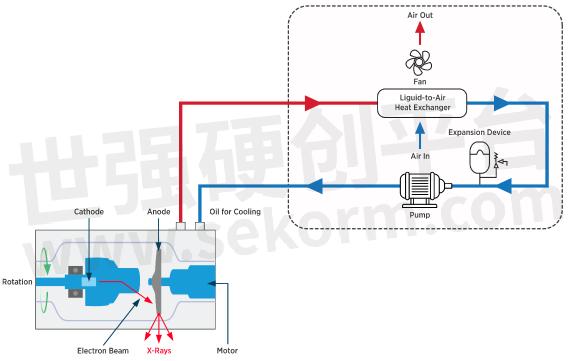
Liquid flow in a typical liquid-to-air heat exchanger system cooling an X-ray equipment.
Laird Thermal Systems Solutions
If an X-ray system goes down, it can shut down the entire manufacturing or security check process. This can significantly impact production and incur large manufacturing costs, or back-up security screening causing massive delays. Robustness of the X-ray and liquid cooling systems are critical to ensure system uptime.
To meet demands of high reliability in X-ray applications, Laird Thermal Systems developed the LA5000 liquid-to-air-based heat exchanger. With a cooling capacity of 5000 Watts at a 10.5°C temperature differential, the LA5000 delivers high heat pumping capacity in a compact form factor. Featuring the latest heat exchanger technology, the LA5000 efficiently manages and dissipates waste heat while maintaining a stable operating temperature relative to ambient conditions. By offering design simplicity and robust components that have been proven for decades, the unit provides low maintenance requirements, ensuring maximum system uptime.
With the ability to cool to near ambient temperatures, even at high heat loads, a heat exchanger system like the LA5000 is ideal for cooling X-ray systems. This allows manufacturers to operate the X-ray system at high temperature conditions, which can be challenging. Compared to standard liquid chillers that operate below ambient temperatures, the LA5000 liquid cooling system operates above ambient temperatures, at a significant lower cost.
The LA5000 not only meet CE, REACH, and RoHS requirements, but also UL61010-1 and IEC 61010-1 lab safety standards.
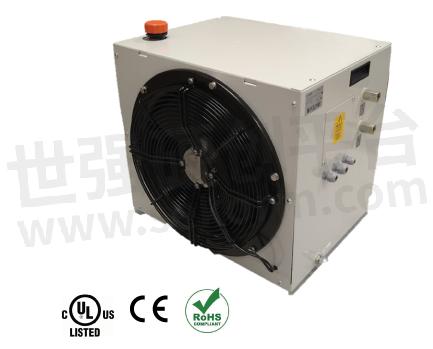
Find LA5000 Datasheet
Laird Thermal Systems has more than 50 years of experience in providing liquid cooling systems for non-destructive testing applications, building systems that offer high performance and long operational life across a broad range of product technology platforms and offering exceptional customer support. We understand what customers need and can develop solutions custom-tailored to their specific environmental, performance and size requirements, whether the emitter is X-ray, alpha or gamma rays.
Conclusion
Liquid cooling systems offer a high reliability, high performance, cost-effective and robust solution for dissipating the large amount of heat generated in industrial X-ray scanners. A wide range of standard and custom liquid cooling systems using liquid-to-air, chiller-based heat transfer configurations in various cooling capacities can meet any industrial X-ray application requirement. Laird Thermal Systems’ LA5000 is a liquid-to-air-based heat exchanger system offering the high heat pumping capacity and reliability needed for industrial scanners.
Applications
Transportation
Industrial X-Ray
Industrial
Industrial X-Ray
Product Section
Liquid Cooling Systems
- +1 Like
- Add to Favorites
Recommend
- Laird Thermal Systems‘ Next Generation Heat Exchanger LA5000 Economically Provides Full-Time Operation for Immersion Cooling in Data Centers
- Laird Thermal Systems Introduces 5000 Watt Heat Exchanger for Industrial Applications
- Laird Thermal Systems Introduces 5000Watt Heat Exchanger for Industrial Applications
- Laird Thermal Systems’ Prototyping Liquid Cooling Systems
- Laird Thermal Systems Commits to Sustainable Principles with SBTi-Endorsed Emissions Goals
- Laird Thermal Systems Custom Solutions for Cooling Medical X-ray Imaging Equipment
- Laird Thermal Systems‘ Testing Liquid Cooling Systems Can Be Tailored According to Customer Specifications and Applicable Industry Standards
- PowerCycling PCX Elongated Thermoelectric Coolers from Laird Thermal Systems Speed up PCR Testing
This document is provided by Sekorm Platform for VIP exclusive service. The copyright is owned by Sekorm. Without authorization, any medias, websites or individual are not allowed to reprint. When authorizing the reprint, the link of www.sekorm.com must be indicated.





























































































































































































































































































































































































































































































































































































































































































































































































































































































